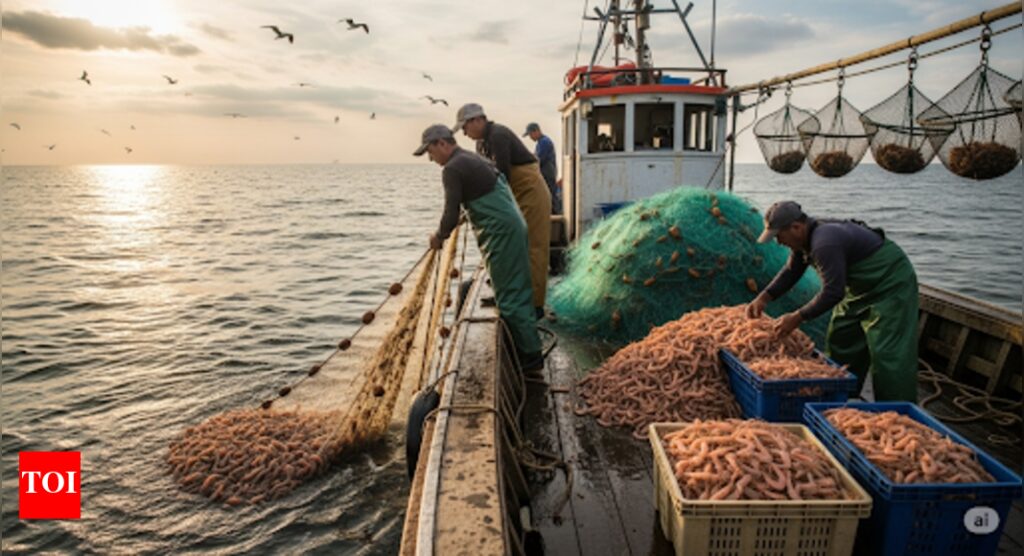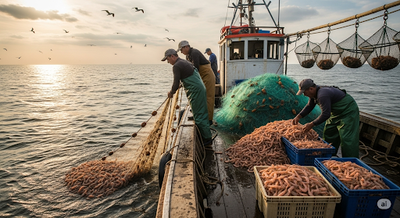Kuwait’s Shrimp fishing season kicks off after 7-month ban: 297 vessels ready for harvest | World News

TL;DR:
- Kuwait officially started its
shrimp fishing season in its economic zone from 1 August, allowing licensed boats to harvest shrimp until early 2026. - Shrimp are marine decapod crustaceans, valuable both commercially and ecologically, with Kuwait focusing on penaeid species like Penaeus semisulcatus and
Metapenaeus affinis. - Authorities strictly enforce seasonal bans, seizing illegal trawlers and prosecuting offenders to preserve shrimp stocks and ensure
sustainable fisheries .
On 1 August, the Public Authority for Agriculture Affairs and Fish Resources (PAAAFR), in coordination with the Kuwait Fishermen Union, announced the start of the shrimp fishing season in Kuwait’s designated economic waters as per Arab Times. A total of 297 licensed vessels are authorized to operate during this period, which serves as an essential annual harvest following a seven-month closed season. Authorities emphasize compliance with Resolution No. 1094/2024, under which inspection teams actively patrol and have already seized vessels involved in illegal trawling during the ban period, with legal actions underway against offenders.
What is Shrimp and how is Shrimp fishing conducted?
Shrimp are small aquatic crustaceans in the decapod order, with ten legs. In Kuwait and the Gulf, the primary commercial species are penaeid shrimp, predominantly Penaeus semisulcatus and Metapenaeus affinis, which account for over 90% of the country’s shrimp landings. Shrimp fishing typically uses bottom trawling: vessels drag weighted nets along the seabed to capture shrimp. While effective, this method often results in bycatch—non-target species or juveniles caught unintentionally. Reducing bycatch is a key conservation objective.
Seasonal management & conservation measures in Kuwait
To safeguard shrimp populations, Kuwait enforces several long-standing fishery controls:
- Annual closed season: Traditionally from September through early August, aligned with shrimp spawning cycles. Since 2002, opening was moved earlier to 1 August to optimize harvest without compromising recruitment.
- Protected zones: Fishing is prohibited within three miles of the coastline and within Kuwait Bay during breeding periods.
- Effort limitations: Entry is capped to about 35 industrial trawlers and 33 artisanal dhow boats. Net mesh sizes are regulated to avoid catching undersized shrimp.
Despite regulations, enforcement can be inconsistent, sometimes leading to illegal fishing during ban periods, mainly due to non-compliance by vessels from neighbouring nations.
Economic & food security implications
The shrimp season is a vital economic lifeline for Kuwait’s fishers, helping:
- Stabilize market prices
- Ensure supply of local seafood
- Support livelihood security
However, persistent issues like subsidized diesel shortages, rising equipment costs, and labour shortages threaten season profitability and sustainability. The Kuwait Fishermen Union has urged the government to restore fuel subsidies and reinforce support to preserve both the industry and national food security.
Why this Matters
- Timing and resource protection: The annual ban and controlled opening help preserve shrimp breeding stocks and overall fishery health.
- Licensed access only: Only approved vessels are allowed during the season to prevent overfishing and protect marine biodiversity.
- Strict enforcement: Customs authorities are actively intercepting illegal vessels to deter violations under Resolution 1094/2024.
- Global relevance: Given high bycatch risks with shrimp trawling methods, careful regulation is critical to maintain sustainable stocks.
Kuwait’s shrimp fishing season, which began on 1 August, marks a carefully managed harvest phase after months of conservation. With licensed vessels only, enforced zones, mesh-size rules, and active enforcement against illegal trawling, the season reflects a balancing act between economic activity and environmental stewardship. Shrimp, delicious yet ecologically vulnerable, symbolizes how modern fisheries must navigate sustainability, regulation, and food security.








